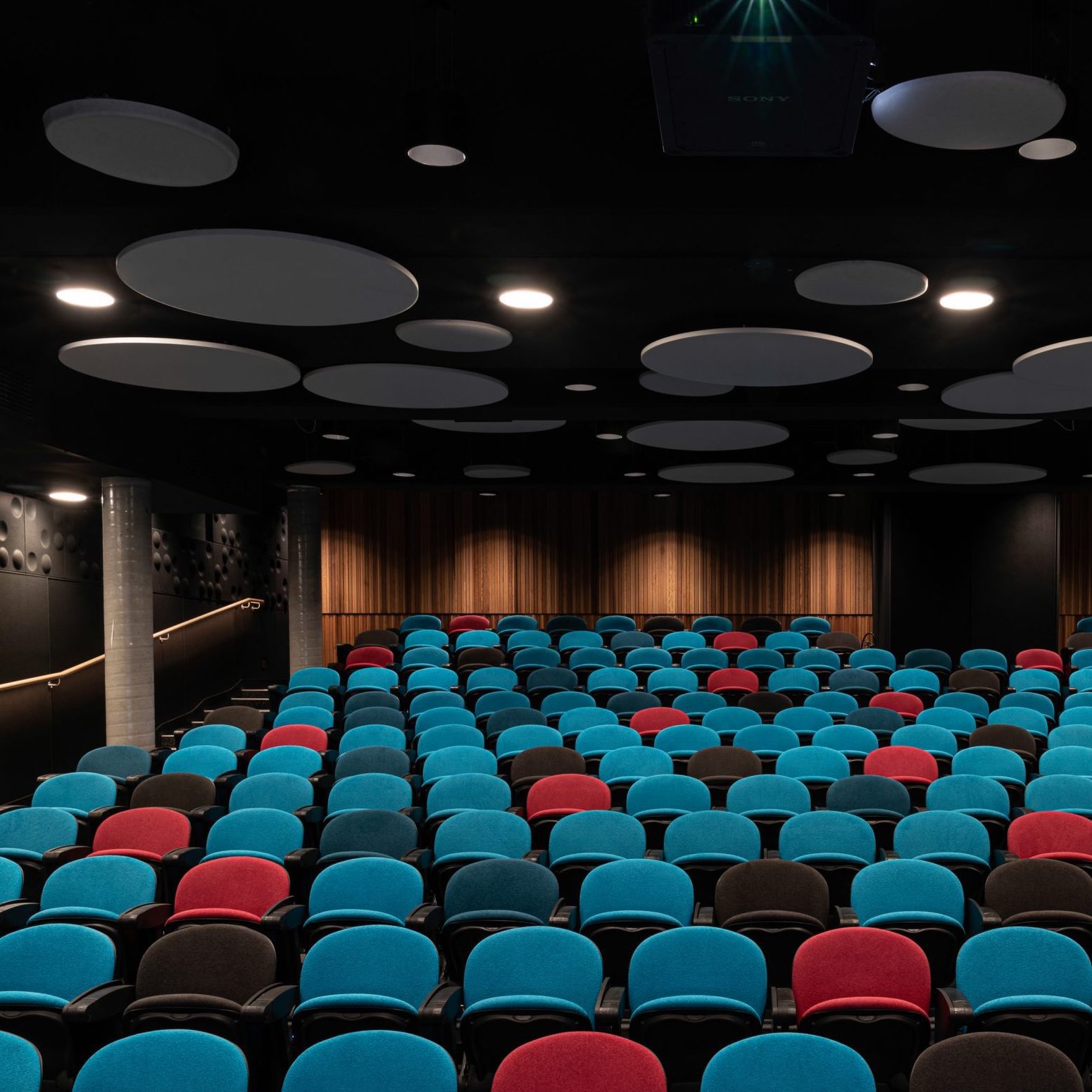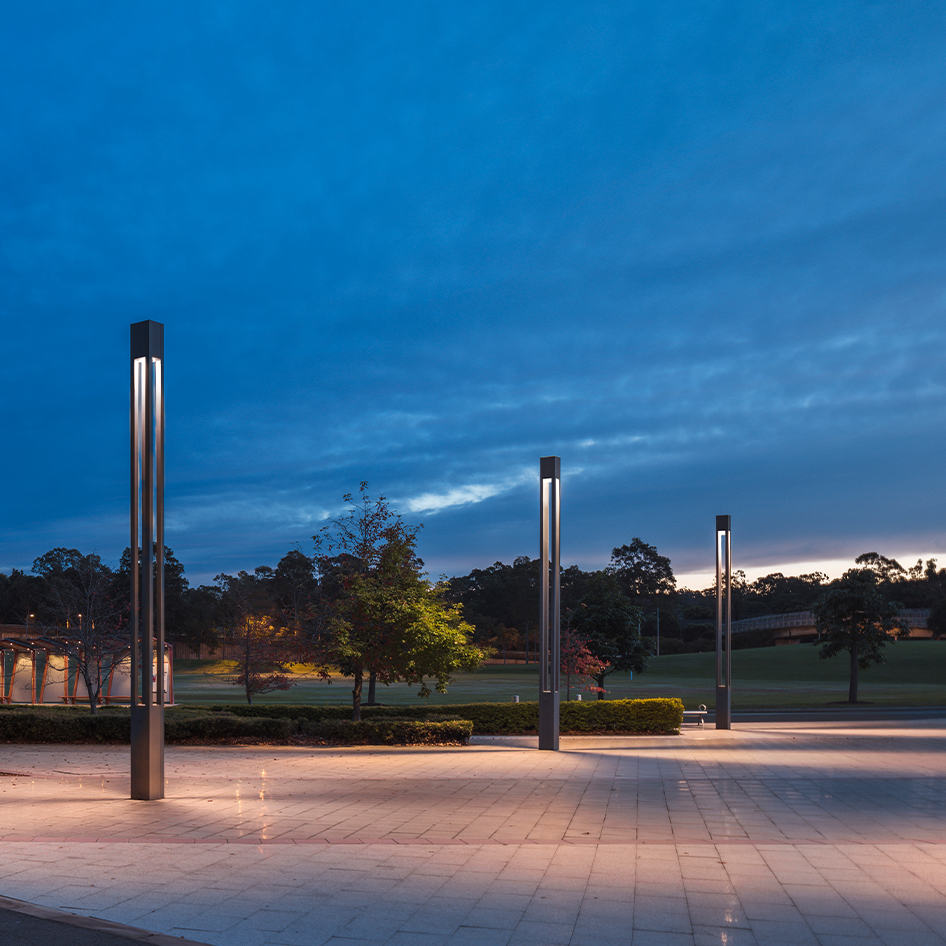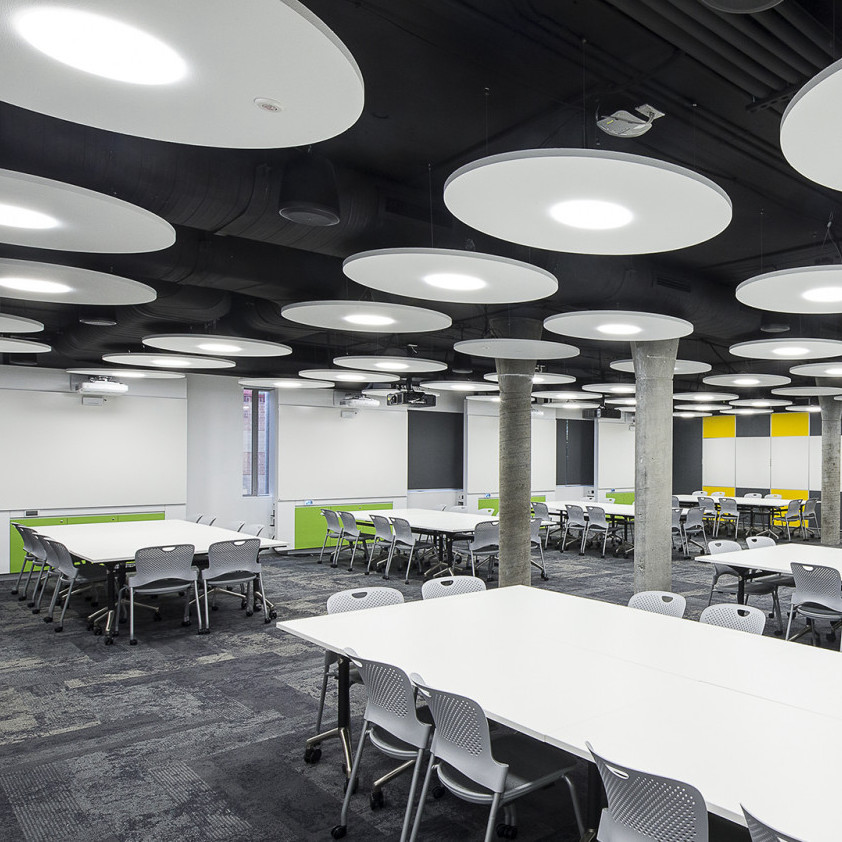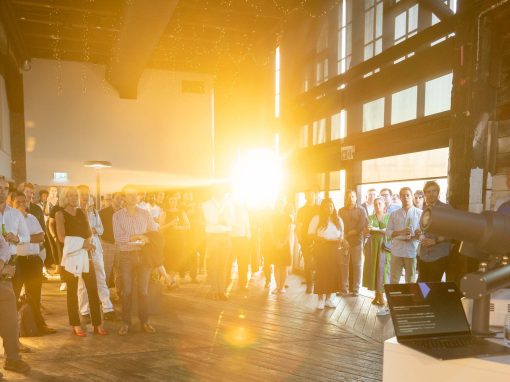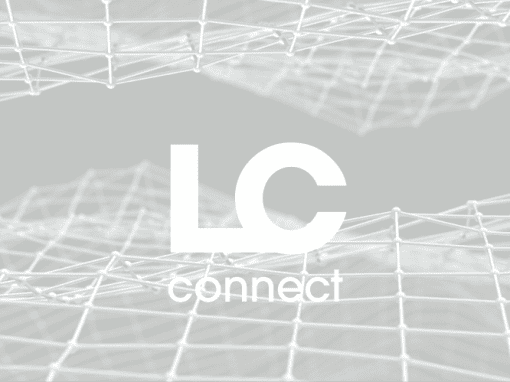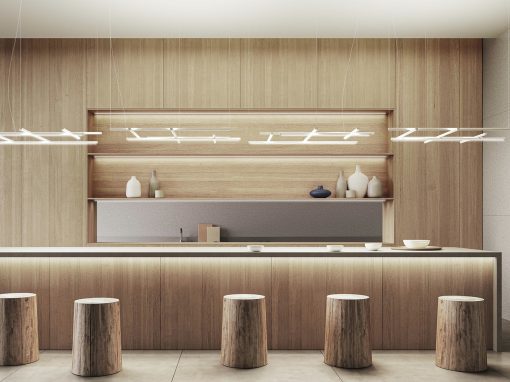LIGHTING THE FUTURE
In the realm of education, lighting plays a crucial role in creating a conducive learning environment. The quality of illumination, both indoors and outdoors, is pivotal in ensuring the comfort, safety, and productivity of students and teachers alike.
THE IMPACT OF LIGHTING IN EDUCATIONAL FACILITIES
Quality Lighting and Natural Daylight Integration
The equation is simple: quality lighting plus natural daylight equals an exemplary educational facility. Good lighting has the power to accentuate architectural features, enhance spatial aesthetics, and create a pleasant atmosphere. It’s a factor that should be at the forefront of the planning phase when designing educational spaces. At Light Culture our luminaire portfolio offers the promise of an attractive learning environment, ensuring a seamless experience for students, teachers, and all stakeholders involved in educational facility design.
Education is evolving, and so are the spaces dedicated to it. Modern educational facilities cater to diverse teaching and learning formats, demanding flexible lighting solutions.
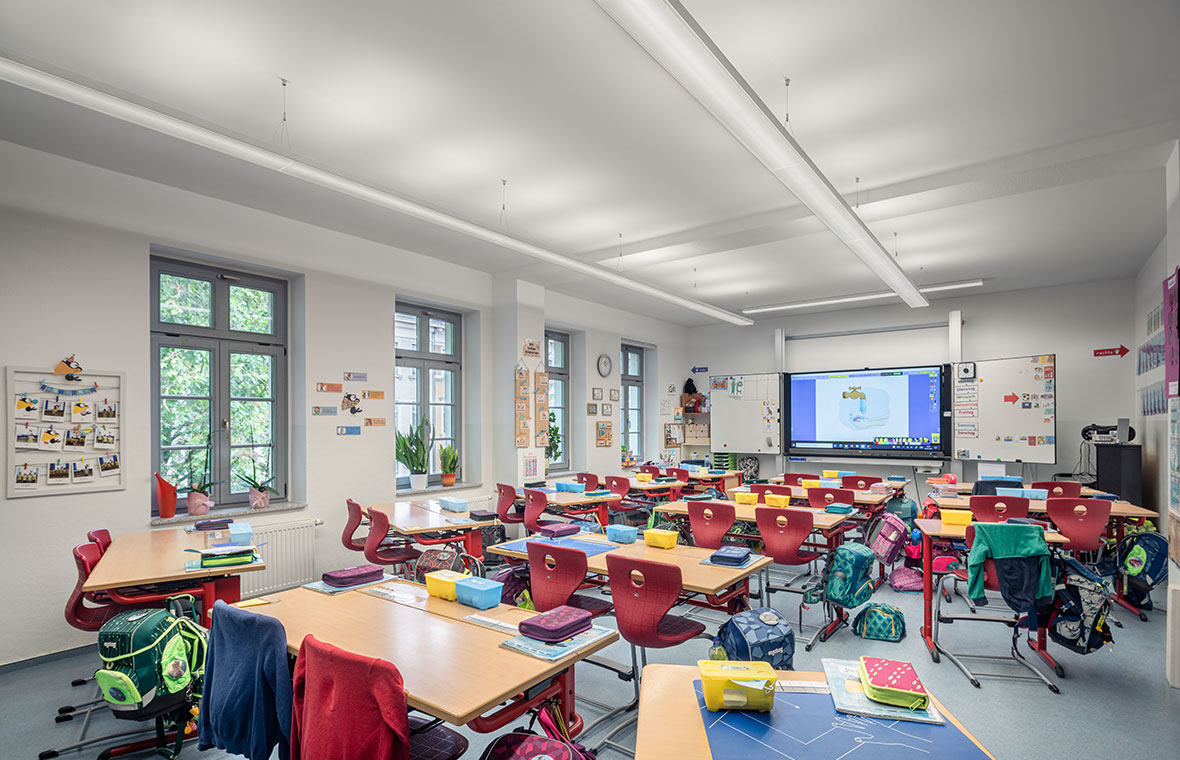
AN ATTRACTIVE LEARNING ENVIRONMENT
Focused work and comfortable learning are a question of lighting.
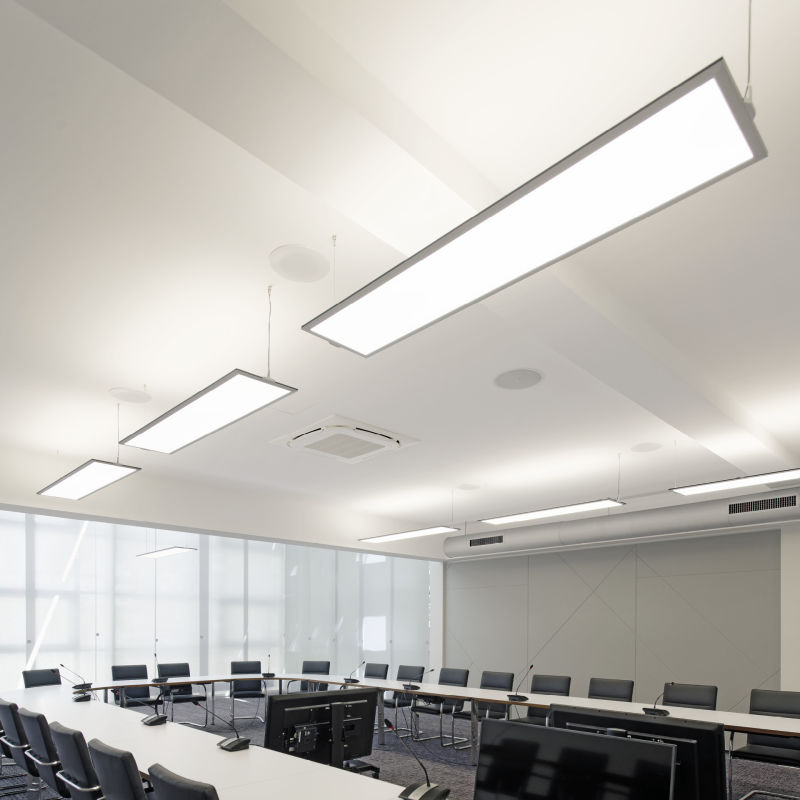
Perfect Classroom Illumination
A perfect classroom demands glare-free light and high visual comfort. BEGA’s large-area luminaires in the FLED series are designed to meet these requirements. With precise micro-structured layers tailored to LED modules, these luminaires offer options for both direct and indirect light distribution. This flexibility ensures optimal lighting for various classroom activities, from note-taking to presentations.
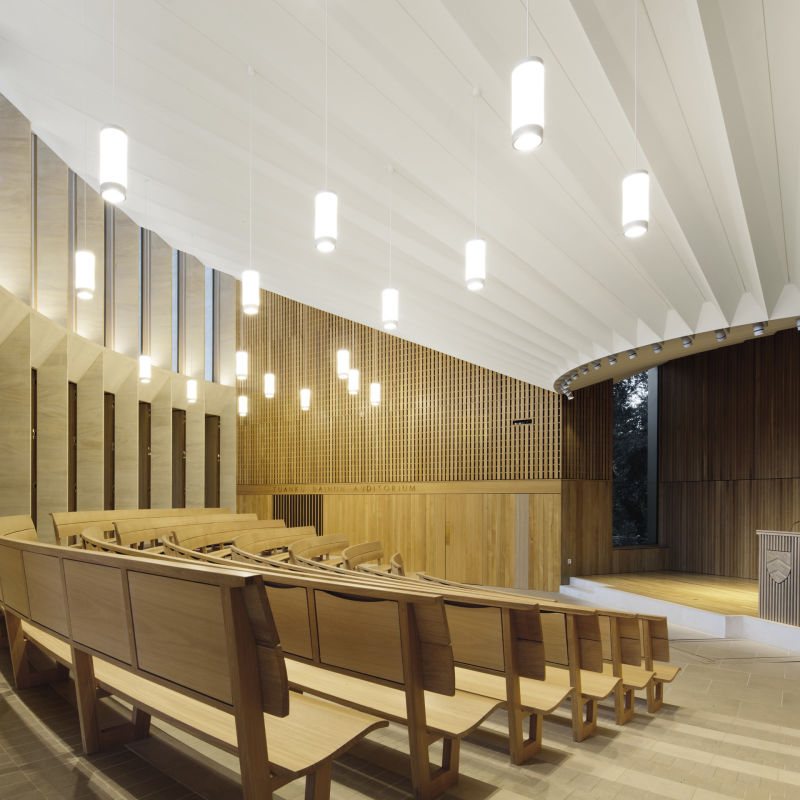
Tailored Lighting Scenarios for Lecture Theatres
When it comes to lecture theatres, lighting parameters are crucial. Safety and visual comfort are paramount, but the specific use of the space and the preferences of both presenters and the audience determine the ideal lighting scenario. Collaboration between installers and educational staff is essential to fine-tune dimming gradations and DALI controls. This approach ensures adaptability and ease of use, allowing quick adjustments to meet changing requirements.
Specialised Lighting for Different Educational Scenarios

PRESENTATION
Depending on the other technical equipment in use, the illumination can be adapted to the lecture thanks to several predefined dimming levels. The linear ceiling luminaires are dimmed down, while the step lighting continues to function as emergency lighting, showing every user of the space the way to the stairways and exits. The light from the downlights around the lectern is not needed Other dimmed luminaire lighting circuits are conceivable and must be specified in advance in order to avoid difficulties from the outset.
Presentations that do not involve interaction with the presenter usually take place in a darkened room. With their shielded light, step lights serve as emergency lighting. In this case, too, additional dimmed lighting circuits are conceivable and must be specified in advance in order to avoid difficulties from the outset.
The following applies to both uses: If notes are to be taken, dimming the recessed ceiling luminaires to 30 percent of their light output is recommended. If the focus is exclusively on the lecture/film; recessed ceiling luminaires and the luminaires for the lectern and blackboard are switched off. The recessed stair luminaires should be operated at full output.
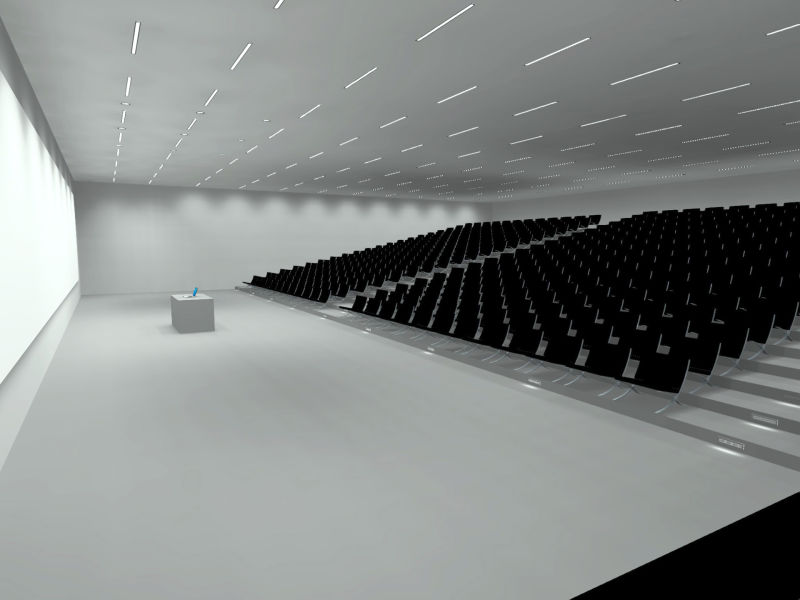
WHITEBOARD & EXAMS
In addition to using the linear ceiling luminaires undimmed, the downlights in the lecture area can be switched on to draw attention to the information on the board and to the lecturer. The luminous intensities of both types of luminaires are fully utilised, meaning there are no distracting differences in brightness. This also prevents eye fatigue.
A degree of illuminance of at least 500 lux is achieved on the desk surfaces, which is fully sufficient for writing and reading work. The brightest possible illumination of the linear ceiling luminaires is perceived by the user as stimulating and motivating. These luminaires also feature excellent glare suppression, despite their intensive illumination. The presentation area can be darkened somewhat by dimming the downlights.
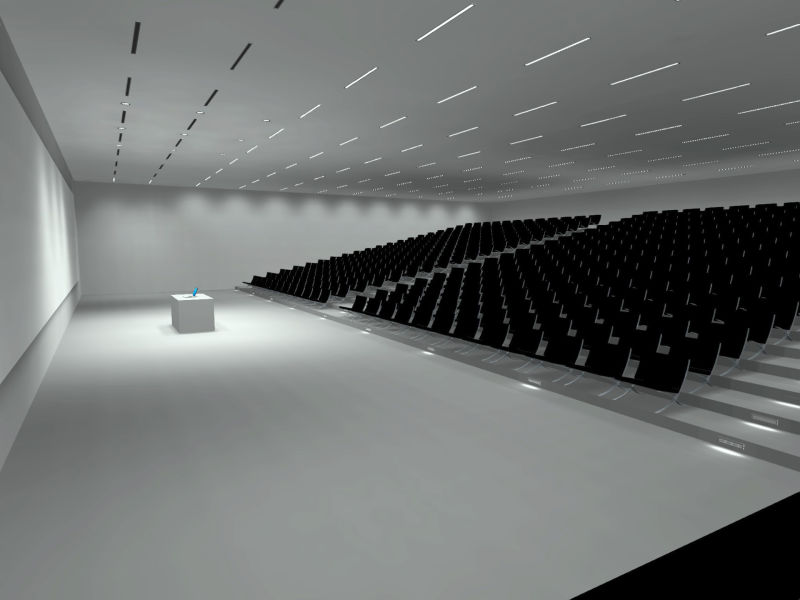
LECTURES
The downlights set the stage for the speaker. They create the appropriate ambience for a lecture, establishing a sense of importance through the lighting. Nothing distracts from the protagonist of the occasion. In addition to the centrally positioned luminaires, the light points to the left and right of the lecture area can be additionally switched on as needed and at 30 percent of the light intensity. The recessed ceiling luminaires are also operated at 30 percent, the stair luminaires at full output. Optionally, the asymmetrical light can be switched on to bring the blackboard into focus.

MOVING AROUND
The focus here is on providing safe routes through the space. In addition to the stair luminaires with full output, the recessed ceiling luminaires with 30 percent output provide illumination that meets the safety requirements for movement in the hall. All other luminaires are switched off.
VARIED LIGHTING DESIGN FOR CORRIDORS OF MOVEMENT
Wellbeing from the outset: how to make corridors feel inviting in an educational facility
Appropriate lighting that creates a sense of safety in the corridors of educational facilities provides accessibility, enables quick orientation, indicates escape routes during emergencies and highlights information areas.The corridors and staircases are the arteries of a building, and help users to find their way around the facility. The lighting draws on the architecture and becomes an functioning part of the building, thanks to the interaction of shapes and light.
Alongside basic illumination, variety is created by indirect light, using ceilings and walls as reflection surfaces.When selecting suitable luminaires from the product portfolio, the amount of daylight should also be taken into account – different control options can turn on the lights only as needed. During declining daylight hours or when people are present, exit lighting is enhanced. This satisfies energy saving aspects without compromising on safety. When modernising existing buildings, replacing the luminaires offers significant potential for improvement, thanks to greater energy efficiency and control options.

Precise illumination using optical systems of the highest lighting quality
Maximising the efficiency of light deflection can further improve the illumination of corridors in educational facilities. These surface-mounted ceiling luminaires feature patented BEGA Vortex Optics® technology. The twisted reflectors made of pure aluminium enable perfect light deflection with excellent visual comfort, thanks to intensive light bundling. The corridor and reflective flooring are illuminated with precision, as soon as the daylight entering the space no longer suffices.

Soft, uniform light from unshielded luminaires, attractively arranged in rows for basic illumination
The arrangement of the unshielded luminaires in rows draws on the length and symmetry of the corridor. Here too, the lighting can supplement the available daylight or replace it after dark. The soft, uniform light brightly illuminates the corridor – the luminaires are DALI-controlled, meaning they receive clearly defined, preset commands to provide dim, supplementary lighting or full lighting.
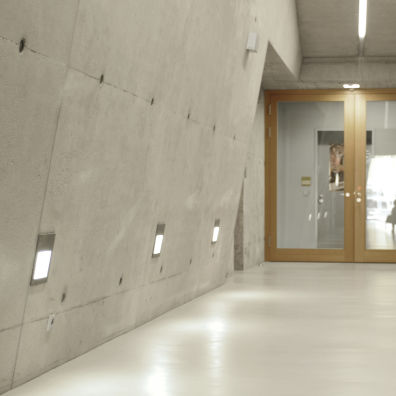
Illuminating extraordinary architecture in harmony with the effects of light
The satin matt floor of the corridor harmonises with the minimalistic yet impressive concrete walls: Meanwhile, the lighting not only provides basic illumination from the ceiling, but also utilises the effect of the light from the recessed wall luminaires on the floor. Even in areas like these, without natural daylight, the adequate glare-free lighting provides a feeling of safety and clear orientation.
High footfall or virtually unused: corridors and staircases require lighting designs for highly diverse requirements
Light is used as a guide and for safety, making it essential in stairs and corridors. Soft and glare-free light creates an inviting sense of well-being. And this type of soft glare-free light won’t cast hard, irritating shadows on steps. This contributes to safety and prevents danger spots caused by the difficult-to-detect change from light to shadow.
The important visual information vital for navigation is therefore clearly discernible thanks to a highly efficient combination of ceiling and wall luminaires. With a cleverly chosen arrangement, these lights will accentuate landings, stairs and longer corridors in different ways, while also producing the desired result of providing lighting which both increases safety and creates an inviting ambience.
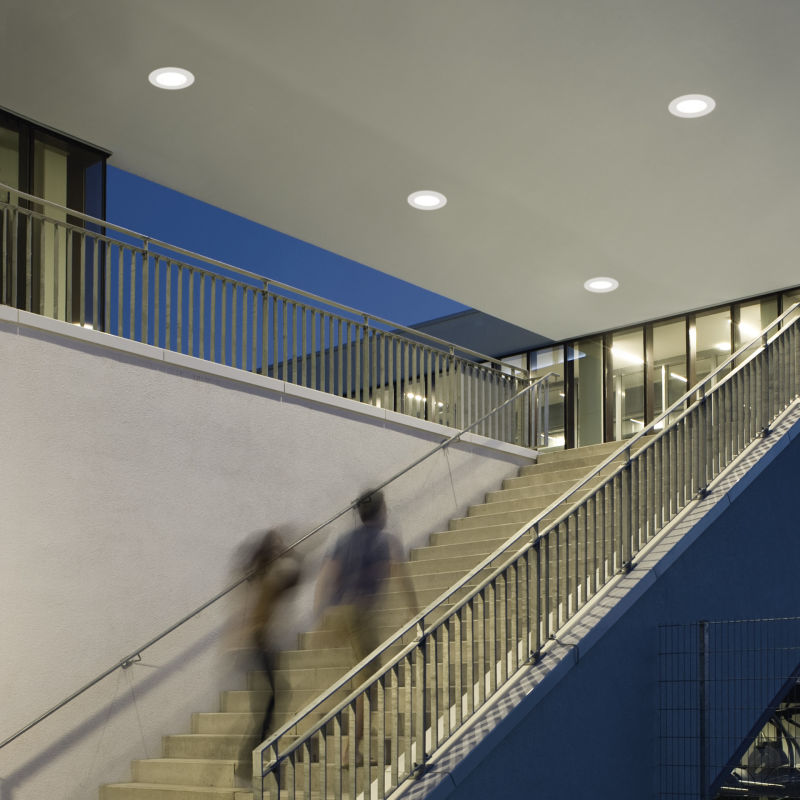
Light from the ceiling
Classic lighting of a stairwell from top to bottom: The directed light from the recessed ceiling luminaires fulfils safety requirements and generates an attention-boosting overall brightness. Meanwhile, the luminaires remain unobtrusive yet efficient lighting elements.
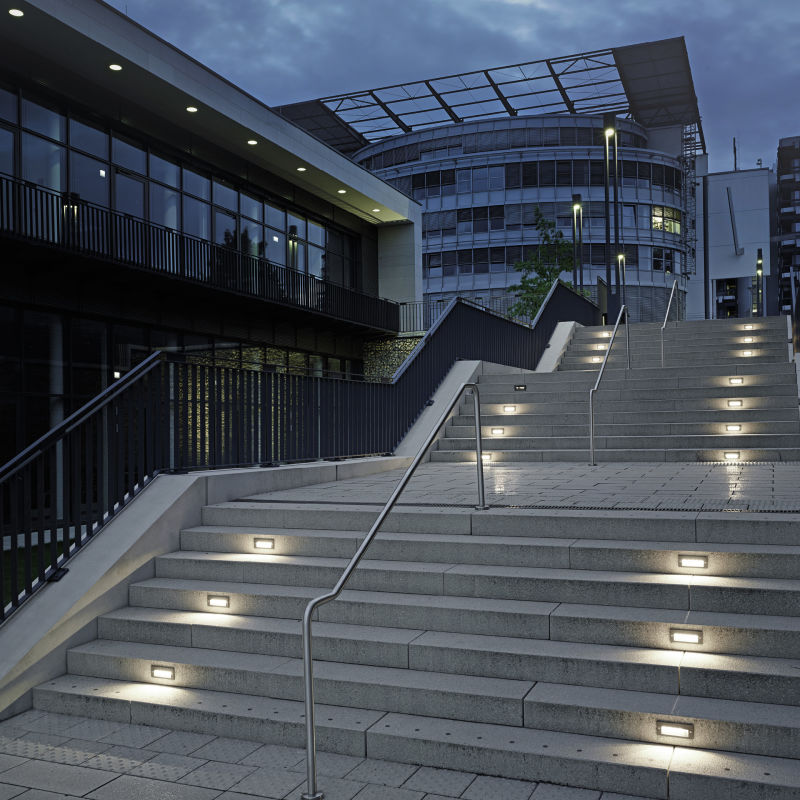
Light from the steps
The safety-promoting illumination of the steps and attractive aesthetic combine into an impressive lighting scenario, without subjecting the user to glare.
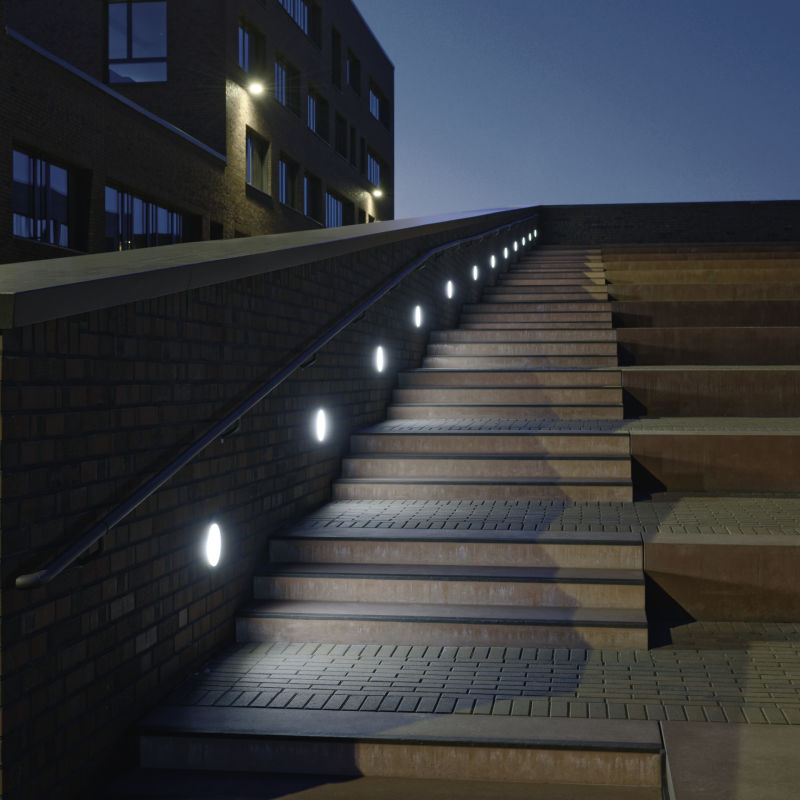
Light from the wall
Low-lying light from recessed wall luminaires is cast far across the steps and provides users with a feeling of safety. High contrasts increase attention.
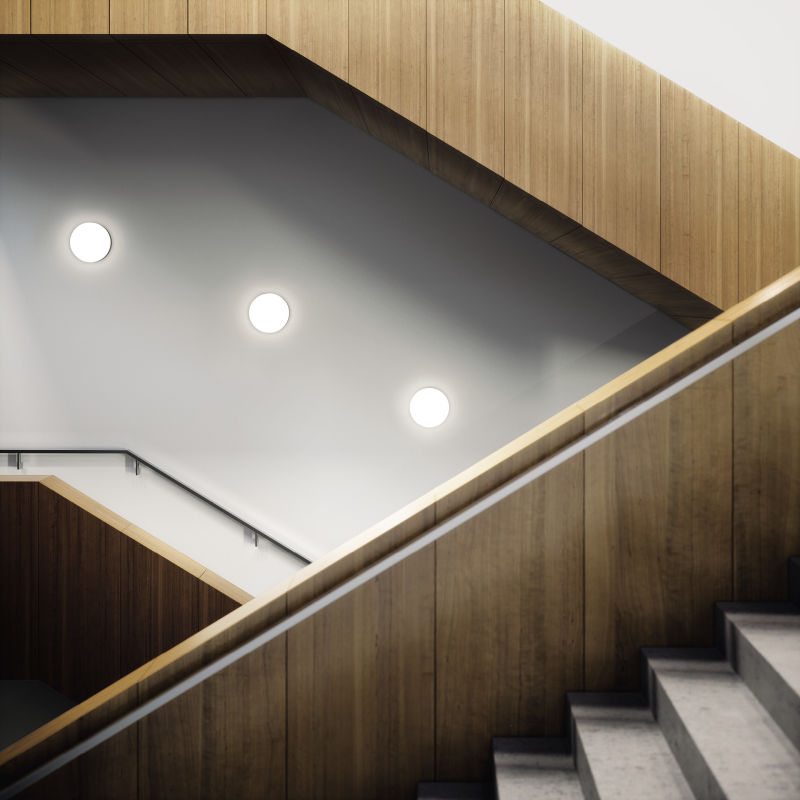
Light on the wall
Unshielded light, which is reflected from the walls, ensures excellent overall illumination of the stairwell. The robust luminaires, arranged in a row, draw on the lines of the architecture and the direction of the stairs. The result is a harmonious overall appearance.
THE CENTRAL MEETING POINT OF EVERY INSTITUION
The illumination of an assembly hall must be as versatile as the room itself
e versatility of an assembly hall is in keeping with its importance as the central meeting place of an educational institution. As an event venue for informal or cultural events, as a meeting room and even as a centre for teaching in small or large groups, no space covers such a broad spectrum of uses as an assembly hall. Effective lighting is a key requirement for this assembly area. After basic illumination in place of or in addition to daylight, the next step in lighting design is to create different illumination zones.

In daylight, the luminaires serve as both an accessory and additional lighting option in the assembly hall. The preset light programming reacts to low daylight levels and switches on the lighting.
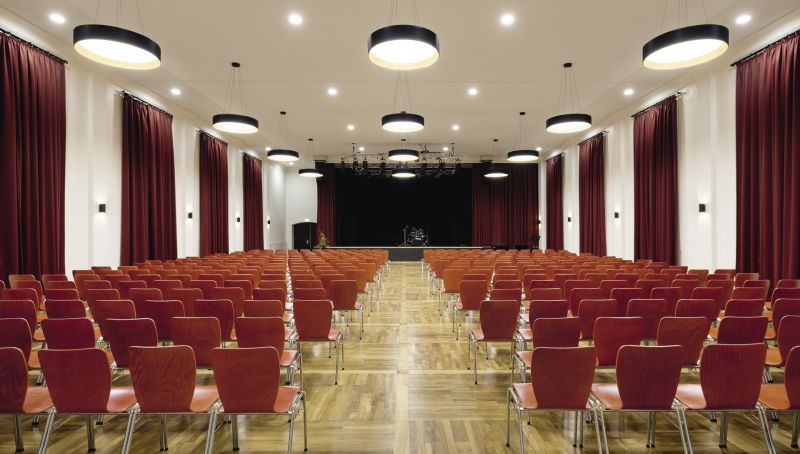
Soft, pleasant, unshielded light gives the assembly hall a warm glow in the evening. When pendant luminaires are combined with wall luminaires and recessed ceiling luminaires, the result is high-quality illumination befitting of this central meeting point. In addition, tunable white luminaires create a daylight-like atmosphere to increase attentiveness, as needed.
Lighting scenarios for different occasions
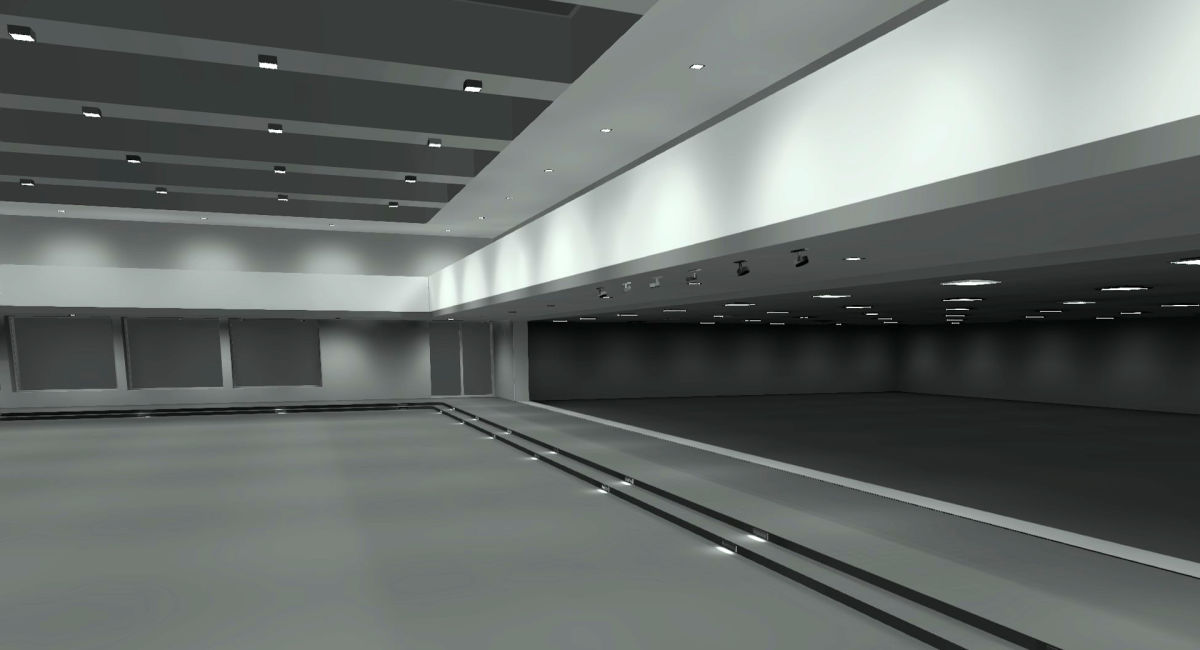
LARGE GATHERINGS
The “peak times” of an educational institution are determined by footfall in the corridors and in the aisles of the auditorium. The following luminaires are used:
Downlights on the glass roof are used to substitute or supplement the light from outside when there is little natural daylight available. Downward-directed light ensures basic illumination to maintain safety in all trafficked areas. These downlights provide a maximum light output of up to 50 percent depending on the amount of daylight available.
Recessed ceiling luminaires in the walkways ensure safe route configuration. Symmetrical wide-angle light provides the necessary visual comfort and guides the user or visitor. The maximum output of the luminaires must be specified during planning and control.
Step lighting adds to the efficacy of hazard markings and provides glare-free warnings for trip hazards when the rest of the illumination is dimmed down or switched off. The discrete yet effective luminaires also separate the walkways from the event area of the auditorium. This gives the entire auditorium additional structure.
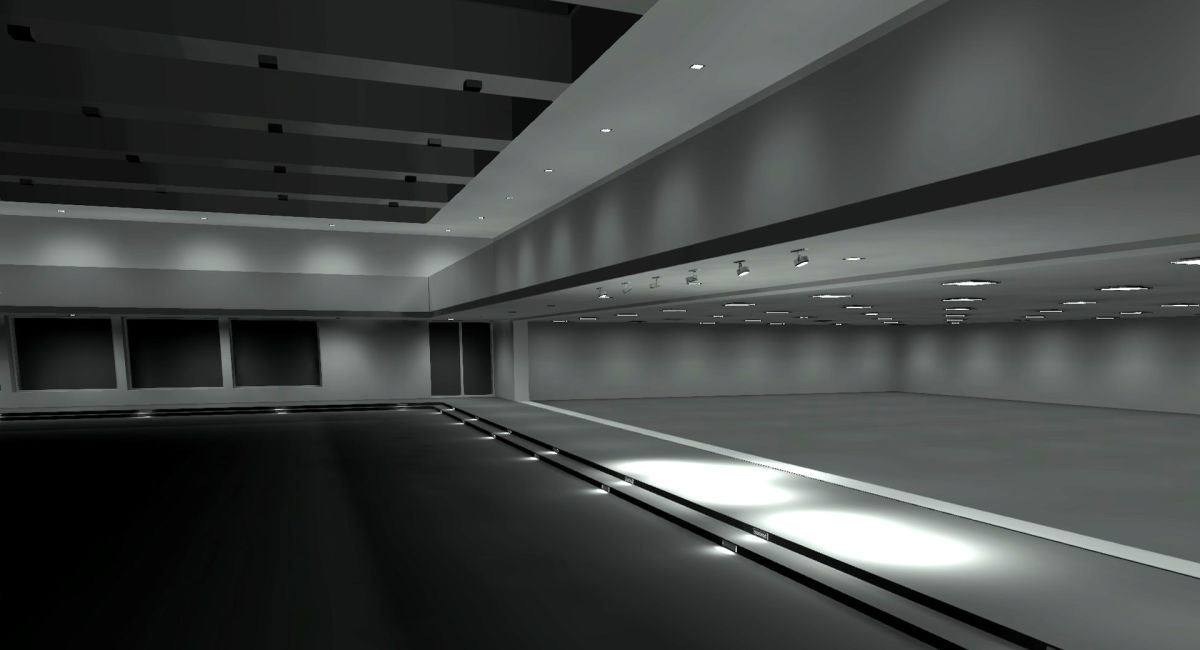
LECTURE
The general illumination should provide bright yet glare-free lighting of the aisles and rows of seats – and with full light output. The main focus here is to provide safety, as well as orientation within the space. When all participants have taken their seats, the dimming level is selected according to the event. The most important criterion to consider is ensuring a glare-free view of the stage from all seats. As a guideline, about 30 percent of the available light output should be used.
Illumination of the steps allows guests to find their way if they need to leave the room in low light. Safety and comfort are two equally important factors to consider.
On stage, good vertical illuminance is required to adequately accentuate the presentation space. Horizontal and vertical illuminance in the lecture area should be at least 1.5 times the average degree of illuminance of the room. Zoom spotlights can be directed to the relevant areas even before the event begins. Texts and lecture materials must be glare-free and easy to read on both tablet devices and paper. The zoom spotlights are operated at 100 per cent output.
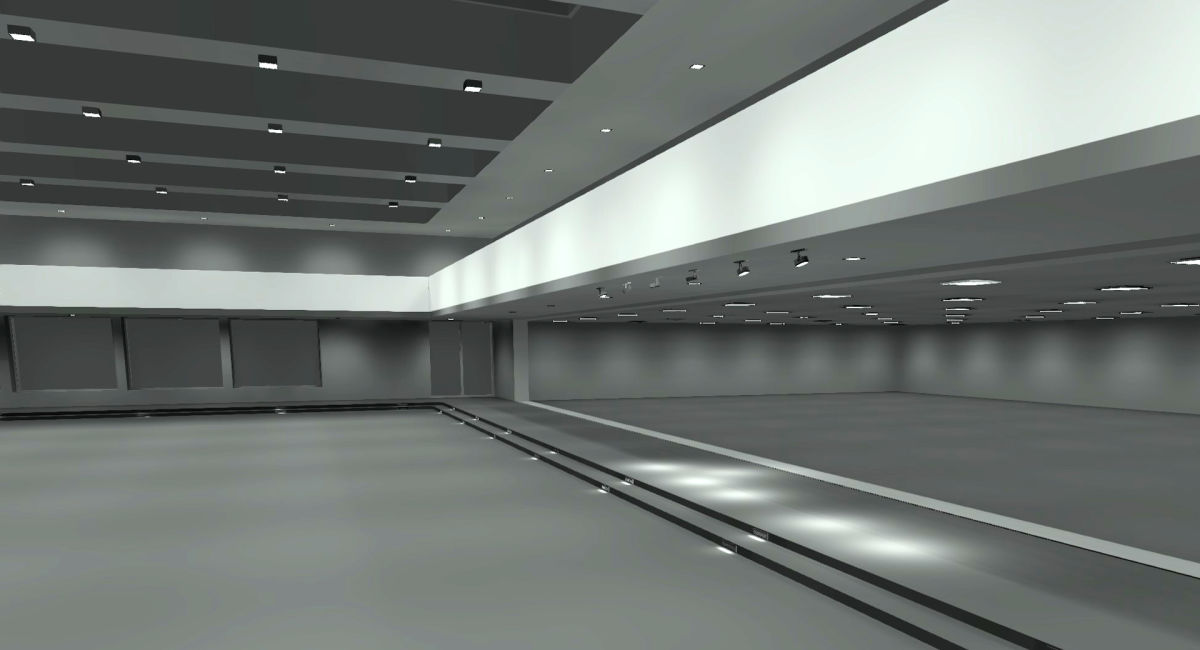
EXHIBITIONS
Basic illumination for these events is also provided by the downlights on the glass ceiling and the recessed ceiling luminaires in the walkways. Special illumination accents for specific areas (exhibits, lectern) are a fundamental feature of such events. Zoom spotlights can be directed as needed and draw the guests´ attention specifically to these areas. All luminaire types are operated at full output.

